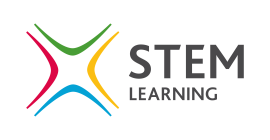- View more resources from this publisher
 National STEM Learning Centre and Network
National STEM Learning Centre and Network
Collecting remote data
Purpose: Good practical science should include a variety of types of investigation and locations. Digital technology can support activities that involve outdoor work and observations over time, without being disruptive to school routines.
Teaching approach: In the example described in the link below, data is collected from different areas of the school grounds over the course of the day to explore patterns in levels of atmospheric pollution. When considering potential hazards created by local traffic, discuss the types of pollution produced by vehicles, and whether these pollutants are emitted at different times of the day. Decisions can then be made on which pollutants to monitor and from which sites in the school grounds. Data loggers with appropriate sensors can then be programmed to collect data over the relevant period, and this data then analysed to look for patterns.
Preparation: The data logger will need to run independently of a power supply and so will need to be charged before use. Connect the relevant sensors to the data logger and position the logger and sensors at relevant sites around the school grounds so that they remain undisturbed for the duration of data collection. Having access to a large-scale map of the school grounds could be helpful to students when they start to analyse the downloaded data.
Link: This sheet explains the range of sensors available for studying atmospheric pollution and provides some basic guidance on setting up an investigation.
- http://sciencescope.uk/wp-content/uploads/2015/07/Investigation-into-Air-Quality-throughout-the-school-day.pdfSimilar equipment is available from a number of different school science suppliers.
Show health and safety information
Please be aware that resources have been published on the website in the form that they were originally supplied. This means that procedures reflect general practice and standards applicable at the time resources were produced and cannot be assumed to be acceptable today. Website users are fully responsible for ensuring that any activity, including practical work, which they carry out is in accordance with current regulations related to health and safety and that an appropriate risk assessment has been carried out.





